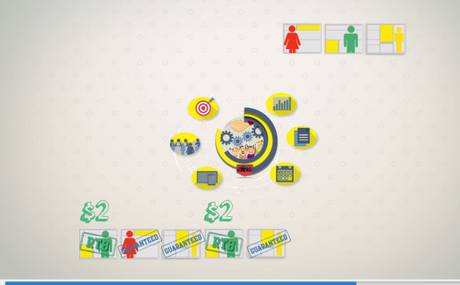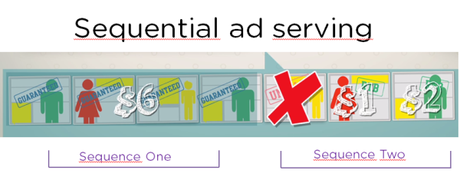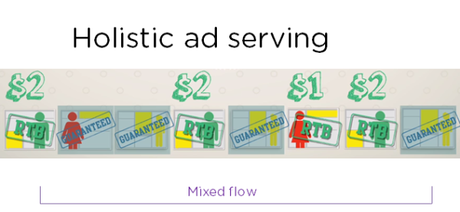The perception of RTB has evolved. First, it was mainly considered an opportunity to monetize remnant inventory with programmatic buying. Now, it’s seen as a great chance for publishers to increase revenues by best allocating their entire inventory to the most rewarding demand sources, without compromising their engagements with direct advertisers.
The “holistic yield” approach has become trendy, but it’s still massively misunderstood and underrated.
We are so excited to share our new video, entitled “Smart AdServer presents the holistic yield” in order to clearly explain “What is Holistic yield management and why does it drive more significant revenues”.
This video features an ad op, Bart, who comparatively tests 2 platforms to sort out which one provides the most effective approach to generate revenue. First is a traditional SSP plugged onto his ad server, and the other a fully-integrated ad serving +RTB platform.
Let’s try to understand why a fully integrated platform allows a better affectation of inventory to the right audience, and improved financial results.
What is the holistic yield management?
Yield management in advertising is a traditional approach aimed at maximizing publishers’ overall revenue by finding the best possible supply allocation (inventory) to traditional demand sources (performance and direct campaigns).
Since RTB emerged, yield was optimized per segment (programmatic and non-programmatic separately optimized) before the notion of holistic yield management was developed.
“Holos” in Greek means “whole”, “entire”, “global”, meaning the allocation system should simultaneously take all demand sources – performance networks , direct buyers and programmatic - into account as a whole to assess which provides the best opportunity for each impression.

Like airline companies’ booking systems, which aim to maximize both flight occupancy rates and average ticket prices according to demand distribution, holistic yield management aims to maximize both overall fill rates and eCPM, and therefore overall revenue.
Several criteria are taken into account to determine which is the best demand source for each impression; it’s not all about the highest price offered (eCPM or bid). The holistic approach also considers forecast inventory (if the system choses to serve an RTB impression now, will the publisher be able to deliver his booked campaigns in full and on time?), targeting criteria (for niche audience triggered impressions).
Why your current SSP doesn’t enable you to holistically manage your yield, despite what you believed?
To be able to holistically manage yield with a complete vision of available inventory, a publisher should only need a single, fully integrated technology platform.
The RTB platform provides only a partial perspective, as does the ad server. Without integration, each platform functions with blinders. As sophisticated as these telescopes may be, they are still telescopes, with a narrow field of vision.
People are often mistaken. It’s commonly understood that an RTB platform by default enables publishers to make part of their inventory available to real time demand, and let several real-time advertisers compete. What’s less understood is:

An RTB platform doesn’t have the default flexibility of assessing, on a per impression basis, which is the best demand source to be served (according to selected criteria) between guaranteed, programmatic and performance/ad network channels.
Actually, with an SSP platform, the demand sources are set by priority level and sequentially, with the same rules applied for a sequence of impressions. No matters what happens demand sources are systematically called, one after another, in the same preselected order, for a sequence of impressions. The platform would often deliver a full sequence of impressions to the same demand source. This is what Bart realizes in the first part of the video.

Does the holistic approach drive publisher significantly more revenues?
Your current SSP sequential ad serving is selling you short of significant revenue.
Publishers afterwards often realize that their programmatic fill rate could have been better. They have lost impressions in programmatic (when there is no buyer interested in bidding above their floor price) when in fact, they wish they had a more flexible platform, able to instead attribute these impressions to more secured channels (such as guaranteed).

What if the platform could take advantage of full integration within the ad serving engine to put to use its vision of the whole inventory and stop missing opportunities?
Maybe it could have been better allocated, with a better global fill rate, had the platform taken the forecast into account to deliver more RTB impressions in first place, without compromising premium deals with direct advertisers?

It has been confirmed by simulations, such as Bart in our video (230% increase in programmatic revenue and +30% in global revenue), and such this fictional scenario by Adopsinsider:

These fictional scenarios have also been proven by experience: Antevenio’s eCPM rose 20% using Smart AdServer RTB+ after having switched from an SSP platform.
email